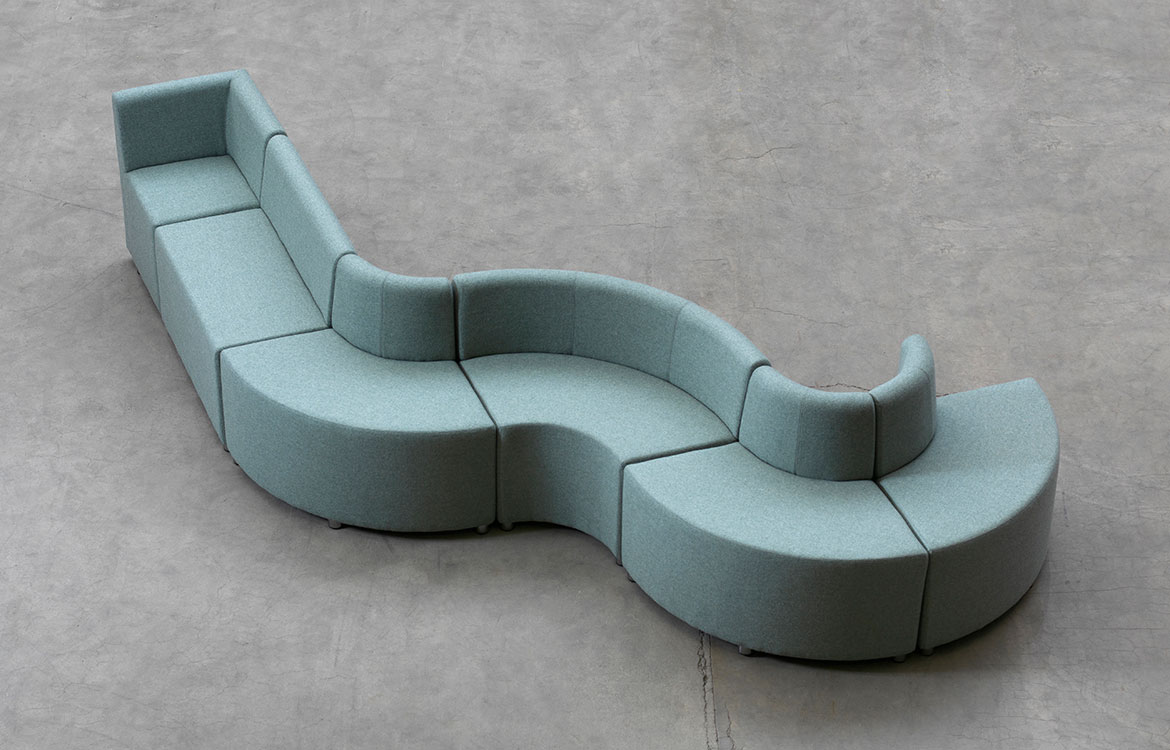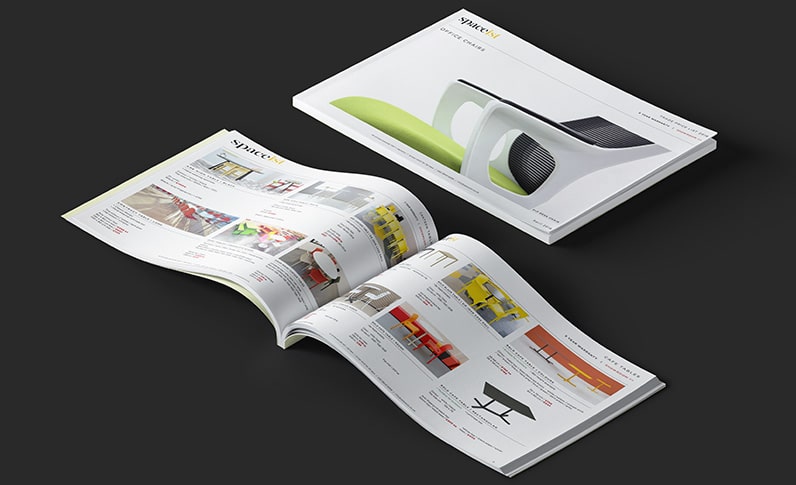A truly flexible workplace allows people to multitask in a supportive environment that has the flexibility to grow and adapt with them. This means that people, procedures and buildings should be designed to transform and readjust as circumstances change. So it makes sense then, when planning the long-term future of your business, that the office furniture you invest in should be flexible too. But what exactly is flexible furniture?
- Supplier of commercial, modern furniture for workplace, education, leisure & public spaces
- 020 8840 6298
- [email protected]
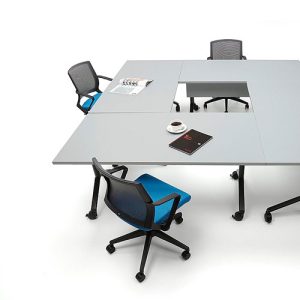
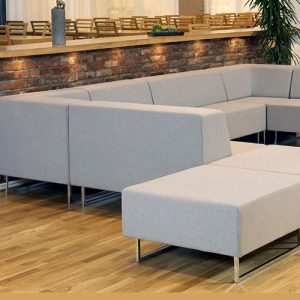
What is flexible furniture?
When considering flexible furniture concepts, it’s helpful to start by thinking about flexible workspace furniture in two different ways:
1. Flexible furniture can be reused instead of discarded when changes occur. Firstly, let’s consider furniture that is originally bought for one purpose, but can be reused when its original function becomes obsolete. Let’s say a company buys a large, modern meeting table, designed for board management meetings in a dedicated boardroom. As the company grows, large meetings in this location become replaced by flexible working and external meetings, so the table is repurposed as a shared large desk for training.
When no staff are training, the space functions as a breakout space for office-based teams. Because the meeting room table design was purposely chosen to be hard-wearing enough to be used flexibly and includes inbuilt connectivity, the table has an extended life. Forward planning like this is economical and a really good way for companies to be more sustainable.
2. Flexible furniture can be used for more than one purpose simultaneously. Some furniture is deliberately designed to be multi-purpose, a specific use for it isn’t clearly directed, but it’s left up to people to decide how the furniture works best for them at the time.
For example, a pair of high-backed booth seats that face each other, with a table in between them, could work brilliantly as an informal meeting area or a space to have private conversations. Because the booth was deliberately designed with an easy-to-clean, contract vinyl finish, it also works as a useful spot for people to eat lunch together.
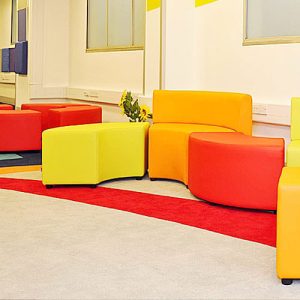
How to create a flexible workspace
When designing flexible work spaces, or purchasing or repurposing office furniture for them, consider the following two key points:
1. Flexible furniture allows you to easily rearrange rooms for different uses.
Some furniture is specially designed to be used in multiple ways by different groups of users or to be easily moved around or rearranged in one room.
For example, modular systems of soft cube seating in a classroom or common room can be grouped together in a circle around a teacher, and then easily moved around into smaller breakout groups by the students. Or groups of small, foldable and stackable tables and chairs can be simply moved about or stored away as required.
2. Modular flexible furniture ranges can be added to or extended.
Purchasing from modular office furniture ranges makes it easy to add extra functionality or change configurations without affecting the original office design.
A modular desk system might enable a small company to buy a basic desk from the range for each staff member. As they expand, they purchase more desks from the same range and can bring groups of four of these desks together to form space-saving, hot desk units, adding matching acoustic screens to divide them. The same model of desk may be designated to an employee who requires extra desk space and could be paired with a matching unit from the range to make a larger L-shape or corner desk with storage.
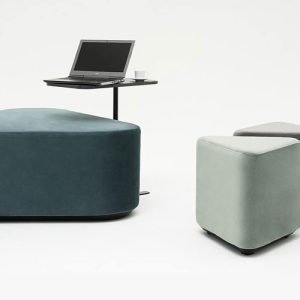
Short and long term furniture flexibility
It can be a very useful exercise to also think of flexibility in terms of the people who actually use the furniture. Consider the daily tasks they fulfil and the amount of time that the furniture is used for.
- Short term furniture flexibility
Short term flexibility could be the ability for individuals to move existing desks around to create a space for a team to work on a temporary project, or moving soft seating to create a breakout space on a training day. - Longer term furniture flexibility.
Longer term flexibility means planning ahead and thinking about ways that the furniture will be used as teams of people scale up, shrink down or find new ways to collaborate.
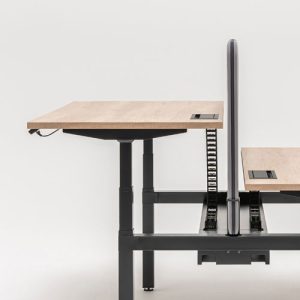
What furniture helps to make an adaptable workspace?
There are many flexible contract furniture designs, but some popular options you may like to consider are:
- A folding meeting table that can be folded up and wheeled away by one person, allowing the room to be used for other things.
- A bespoke, made-to-measure, modular reception sofa that maximises visitor seating, but can be moved in sections to accommodate the occasional large delivery.
- Cafe-style chairs and tables or booth seating that work equally well in dining rooms or breakout spaces.
- Modular, height-adjustable desk systems with matching high and low storage units.
- Fun and colourful modular cubes and soft seating in a range of heights and shapes, are perfect for schools and colleges.
What furniture helps to make an adaptable workspace?
There are many flexible contract furniture designs, but some popular options you may like to consider are:
A folding meeting table that can be folded up and wheeled away by one person, allowing the room to be used for other things.
A bespoke, made to measure, modular reception sofa that maximises visitor seating, but can be moved in sections to accommodate the occasional large delivery.
Cafe-style chairs and tables or booth seating that work equally well in dining rooms or breakout spaces.
Modular, height-adjustable desk systems with matching high and low storage units.
Fun and colourful modular cubes and soft seating in a range of heights and shapes, perfect for schools and colleges.
How does bespoke sizing make furniture more flexible?
As property costs increase and companies seek to maximise space, bespoke sizing can help to make office or school furniture more flexible. Everything from desks to meeting tables to sofas can be made in bespoke sizes to exactly fit into your space.
How can I use colour to help with furniture flexibility?
Contract furniture is available in a much wider range of shades than domestic furniture. This means that you can use colour to help with furniture flexibility, mixing and matching shades, adding new colours to existing ranges and even matching brand colours and logos.
Why buy contract office furniture?
Contract furniture is designed to be long lasting, in quality as well as availability. High street furniture ranges come and go very quickly as fashions and cheap suppliers change. Don’t risk being stuck with furniture that cannot be cleaned or is impossible to match in future.
Why should I work with an experienced contract furniture supplier?
An experienced contract furniture supplier like Spaceist will be able to advise on commercial space planning, modular system details and flexible furniture ranges – always with the long-term goals of your business in mind.


